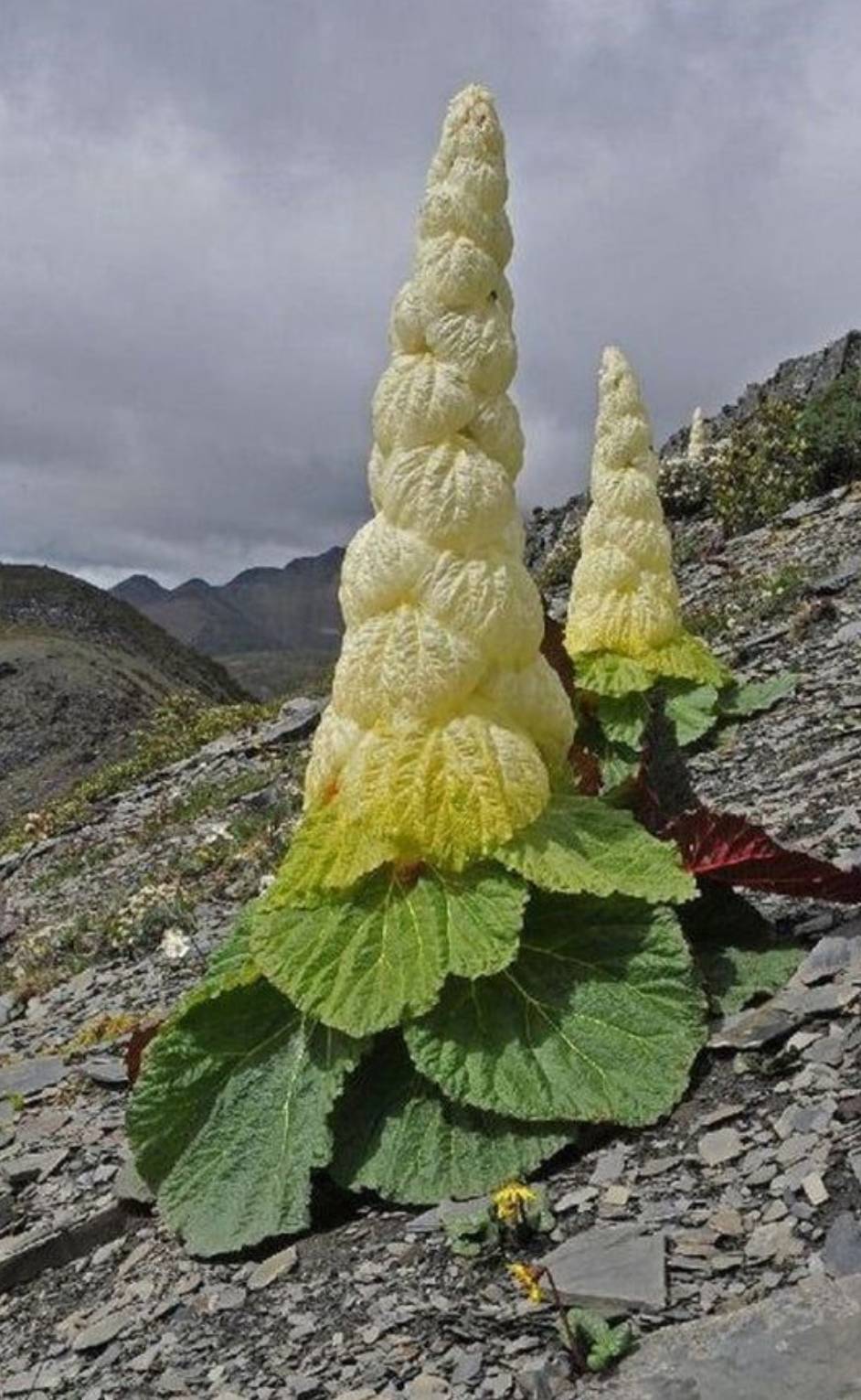
Sikkim Rhubarb, Noble rhubarb
Sikkim rhubarb is a giant herbaceous plant native to the Himalayas. It is an extraordinary species of rhubarb. At 1-2 m tall, Sikkim rhubarb towers above all the shrubs and low herbs in its habitat, and it is visible across valleys a mile away. It is often called a glasshouse plant because of its outer curtain of translucent bracts which pass visible light, creating a greenhouse effect, while blocking ultraviolet radiation. These are important defenses against the increased UV-B exposure and extreme cold in its high altitude range. An individual plant is a conical tower of delicate, straw-coloured, shining, translucent, regularly overlapping bracts. The higher ones have pink edges. Large, glossy, green radicle leaves, with red stalks and nerves, form a broad base to the plant. Turning up the bracts reveals membranous, fragile, pink stipules. Within these are short branched panicles of tiny green flowers. The root is often 3-7 feet long and as thick as an arm, and bright yellow inside. The stems are pleasantly acidic, and they are consumed by the local people, who call the plant Chuka. The hollow of the stem contains a good deal of limpid water. After flowering, the stem lengthens and the bracts separate one from another, turning a coarse red-brown. As the fruit ripens, the bracts fall away, leaving a ragged-looking stem covered with panicles of deep brown pendulous fruits. Sikkim Rhubarb is native to eastern Himalayas, from E Nepal to Sikkim and SE Tibet, at altitudes of 3600-4500 m. Flowering: June-July.
Advertisements



